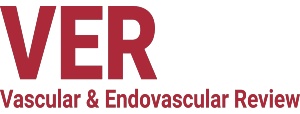VOLUME 6, 2023
The Role of Targeted Infra-popliteal Endovascular Angioplasty to Treat Diabetic Foot Ulcers Using the Angiosome Model: A Systematic Review
VOLUME 7, 2024
Innovations in Vascular Imaging: Enhancing Diagnosis and Treatment of Carotid Artery Disease
Taylor’s University, Malaysia.
Abstract
Many vascular ultrasonography methods can be helpful in difficult diagnostic circumstances. Directional power Doppler ultrasound, contrast-enhanced ultrasound, B-flow imaging, microfluidic imaging, 3-dimensional vascular ultrasound, intravascular ultrasound, photoacoustic imaging, and vascular elastography are examples of new vascular ultrasound applications. Together with Doppler ultrasonography, these methods offer improved imaging of tiny arteries, increased sensitivity for detecting sluggish flow, and improved evaluation of the vascular wall and lumen while getting beyond Doppler's limits. Making ultrasound competitive with computed tomography and magnetic resonance imaging for vascular imaging is the ultimate objective of these technologies. We are now able to identify the fundamental processes of vascular disorders both in vivo and ex vivo due to recent developments in vascular imaging. In addition to biomarkers and clinical manifestations, efforts have been undertaken in the last ten years to develop a variety of approaches for assessing the evolution of atherosclerotic plaque and vascular inflammatory alterations. The vital roles of in vivo and ex vivo vascular imaging, such as computed tomography, positron emission tomography/scintigraphy, magnetic resonance imaging, intravascular ultrasound, computed tomography, and most recently, optical coherence tomography, were highlighted in a number of recent publications in Arteriosclerosis, Thrombosis, and Vascular Biology. These techniques can all be used with relative ease in bench and clinical studies. In the near future, these clinically accessible imaging modalities will be employed due to innovative techniques that have been proposed in multiple landmark research. Furthermore, it is expected that future advancements in intravascular imaging modalities, including polarized-sensitive optical coherence tomography, micro-optical coherence tomography, optical coherence tomography–intravascular ultrasound, and optical coherence tomography–near-infrared autofluorescence, will improve the care of patients with cardiovascular disease. In this review paper, we will discuss current efforts for future breakthroughs as well as recent advancements in vascular imaging.
Lecture in accounting. University of Basrah, College of Administration and Economics, Department of Accounting.
Lecture in accounting. University of Basrah, College of Administration and Economics, Department of Accounting.
